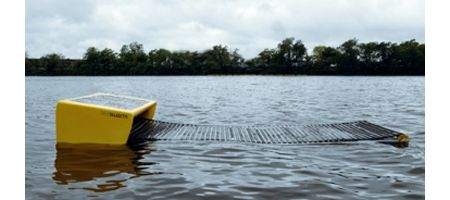MIT has developed an autonomous floating robot that it says can absorb as much as 20 times its own weight in oil.

It says a ‘swarm’ of 5,000 of the devices could have cleaned up the Gulf oil spill in a month.
The Seaswarm robot is essentially a conveyor belt covered with a thin nanowire mesh which absorbs oil while repelling water. By heating up the material, the oil can be removed and burnt locally and the nanofabric can be reused.
It’s 16 feet long and seven feet wide, and uses two square meters of solar panels for self-propulsion. The units use wireless communication and GPS and manage their coordinates to ensure they’re evenly distributed across a spill site.
“We envisioned something that would move as a ‘rolling carpet’ along the water and seamlessly absorb a surface spill,” said MIT’s Senseable City Lab Associate Director Assaf Biderman. “This led to the design of a novel marine vehicle: a simple and lightweight conveyor belt that rolls on the surface of the ocean, adjusting to the waves.”
Traditional skimmers are attached to large vessels and need to constantly return to the shore for maintenance. And while over 800 skimmers were deployed in the Gulf of Mexico this summer, it’s estimated that they collected only three percent of the surface oil.
“We hope that giant oil spills such as the Deepwater Horizon incident will not occur in the future – however, small oil leaks happen constantly in off shore drilling,” Ratti said. “The brief we gave ourselves was to design a simple, inexpensive cleaning system to address this problem.”
The team now plans to enter the design into the X-Prize’s $1 million oil-cleanup competition.






